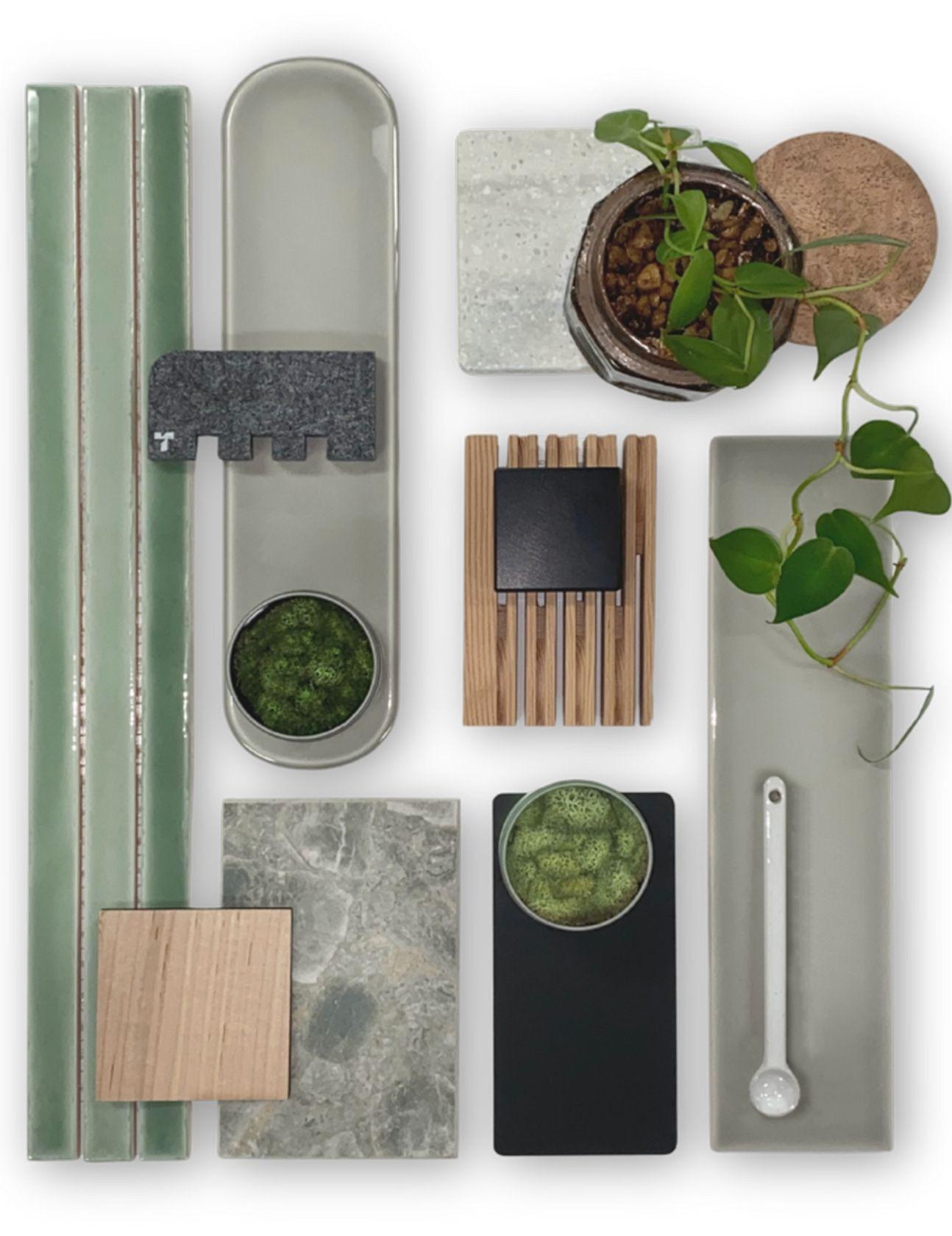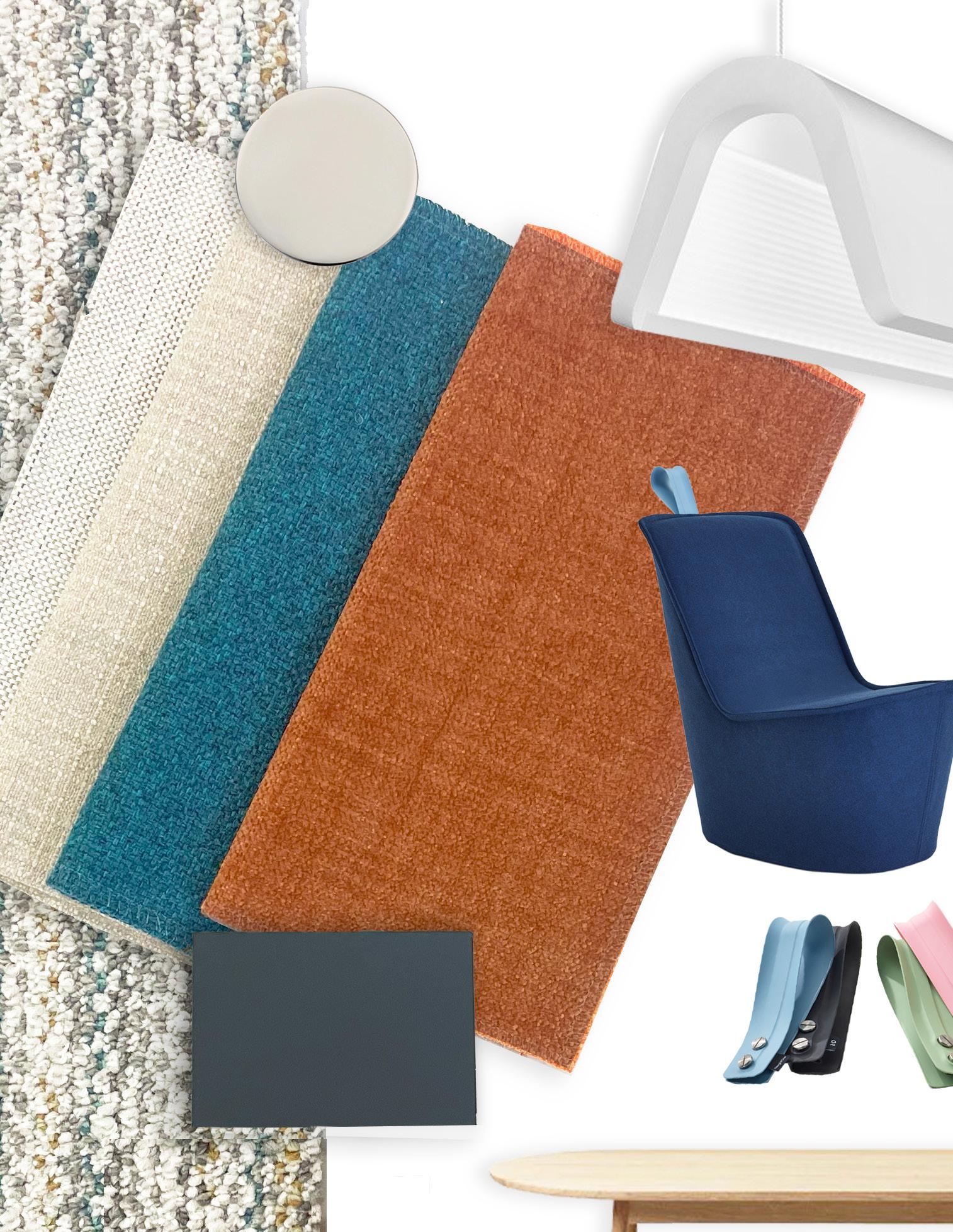

HEALTHY MATERIALS GUIDE
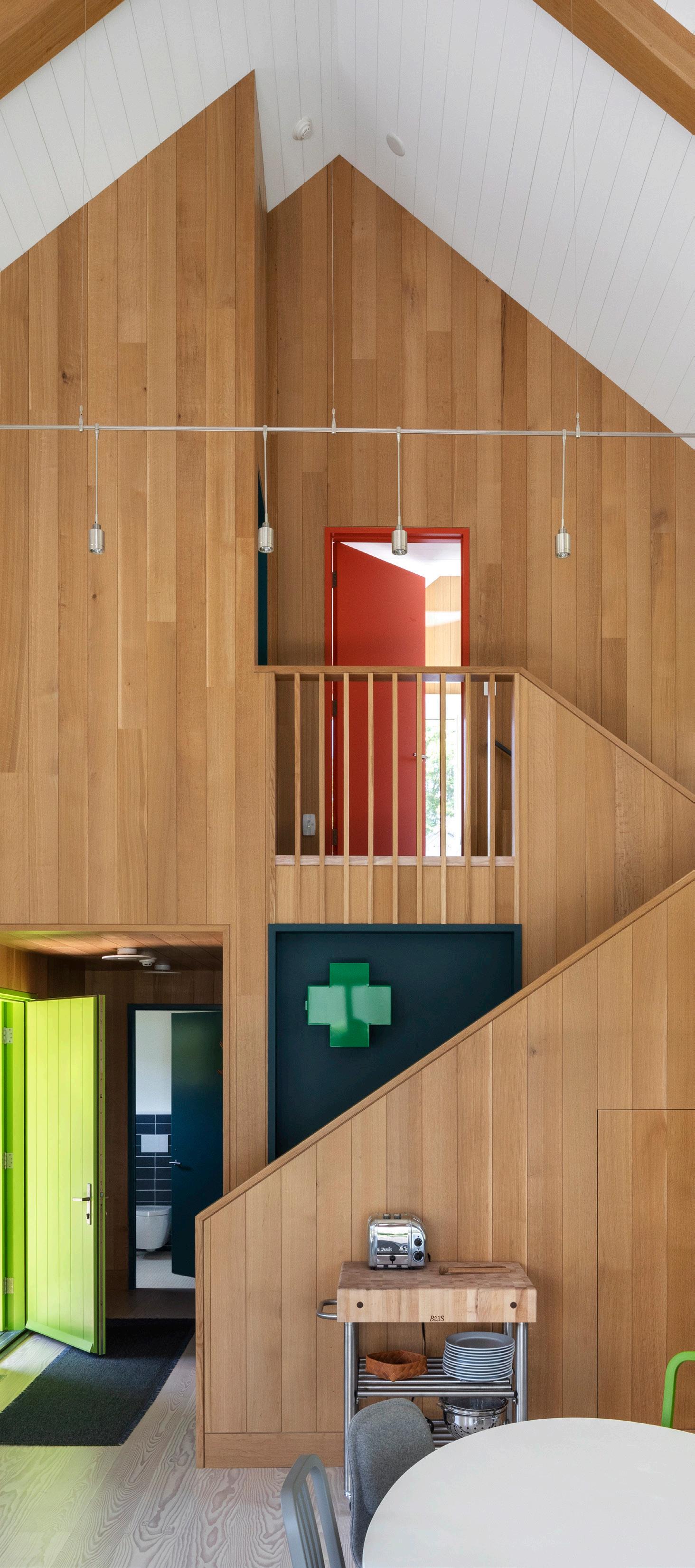
01 | OUR COMMITMENT
DSK’s pledge to join AIA 2030 in 2018 is just the beginning of the firm’s committment to sustainability.
As designers, we should strive to create healthy, long-lasting spaces for our clients. In order to do so, we need to understand the impacts of material sourcing and content on both the users and supply chain.
This document is supplemental to our Sustainability Action Plan, outlining the steps we can take in the design process to mindfully integrate sustainable, clean materials.
02 | INTERIOR SUSTAINABILITY GOALS
Institutional Spaces
Overarching Goal:
Align with the Common Materials Framework and Design Materials Pledge goals set by the AIA and collaborating firms. Prioritize the following statements in all projects.
AIA Architecture & Design Materials Pledge
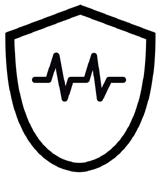
HUMAN HEALTH
Prefer products that support and foster life throughout their life cycles and seek to eliminate the use of hazardous substances.
Look for: Declare, HPD’s, Cradle to Cradle, BIFMA, Red-List-Free
SOCIAL HEALTH & EQUITY

Prioritize products from manufacturers that secure human rights in their own operations and in their supply chains, positively impacting their workers and the communities where they operate.
Look for: JUST Certification, B Corp, Cradle to Cradle Social Fairness Certificate
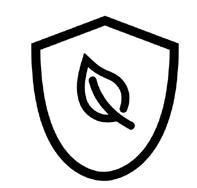
ECOSYSTEM HEALTH
Select products that support and regenerate the natural air, water, and biological cycles of life through thoughtful supply chain management and restorative company practices
Look for: EPD’s, FSC Certified Products, Recyclable Materials, Local Materials, NSC 373 Stone Certification

CLIMATE HEALTH
Prefer products that reduce carbon emissions and ultimately sequester more carbon than emitted.
Look for: Cradle to Cradle, EPD’s, Embodied Carbon Metrics, Carbon Neutrality, Living Product Challenge
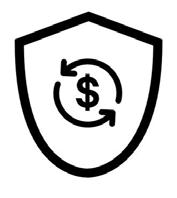
CIRCULAR ECONOMY
Reuse and improve buildings by designing for resiliency, adaptability, disassembly, and reuse, aspiring to a zero-waste goal for global construction activities.
Look for: Manufacturer Take Back Programs, Recyclable Materials
03 | OUR STEPS:
3
; Sign the AIA Architectural & Design Materials Pledge
; Sign the Interior Design Pledge for Positive Impact
; Educate our teams on what to look for in a healthy material and create a guide
; Specify products that have a minimum of one certification or green label
; Set material goals for each project
; Relay material guidelines to vendors before taking new products into library
; Include no added Formaldehyde in specifications
; Clean out Materials Library and return products that do not have any sustainabilty or healthy material certifications
; Specify carpets that have a take-back program & are Cradle to Cradle
; Products should have a Declare label or EPD & HPD’s available
; Target specific Red-List Chemicals to eliminate from product selections
; Include Certifications as part of the submittal process
; Sign the Lighting Advocacy letter
; Eliminate targeted Red-List Chemicals from interior finishes
; Consider FSC Certified Wood for millwork and flooring whenever possible
; Furniture should be BIFMA Compliant or Greenguard certified
; Work towards specifying light fixtures from manufacturers that provide transparency about their products through Declare or HPD’s & require material ingredient reports as part of the submittal process
Phase 1:
Step 1: Sign on to the AIA and IIDA Pledges
Step 2: Create a DSK Guide to assist with specifying healthy materials and set standards
Step 3: Relay DSK Guidelines to vendors before accepting new products in library
Step 4: Interior selections should meet AT LEAST one of the following requirements
; Declare
; Red-List-Free
; Environmental Product Declaration (EPD)
; Health Product Declaration (HPD)
; Cradle to Cradle
; CRI Green Label Plus
; Floorscore
; UL Greenguard Gold or Silver
; Living Product Challenge Compliant
; NSF/ANSI 140
; ANSI/NSC 373 Stone Certification
; SCS Indoor Air Quality Certified

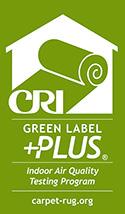

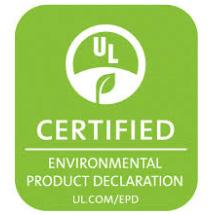
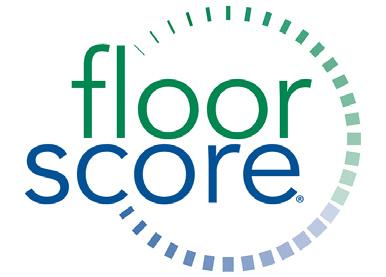
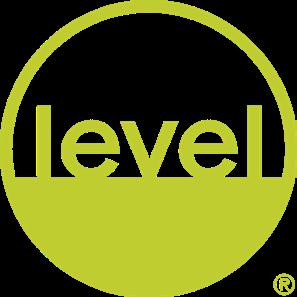
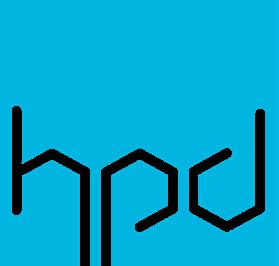
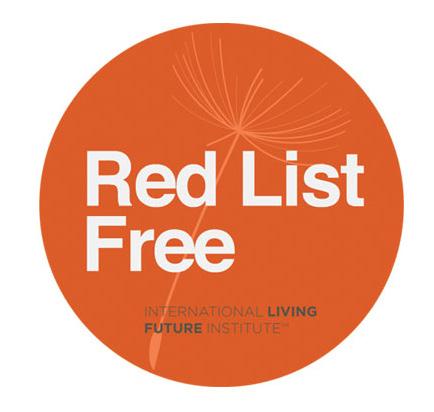
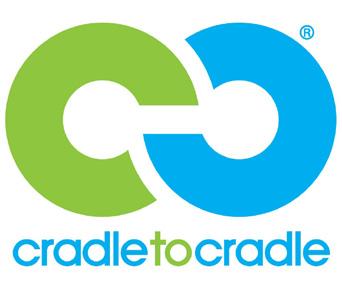

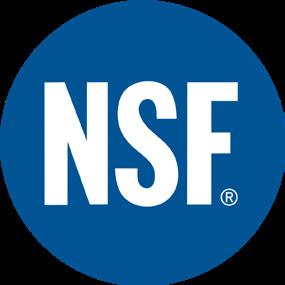
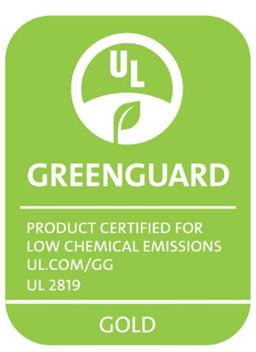
Phase 2:
Step 1: Identify Red-List Chemicals to Avoid ; Added Formaldehyde ; PVC ; Halogenated Flame Retardants
Step 2: Materials Library Cleanout
; Return materials that don’t meet DSK Guidelines
; Create a separate section for materials without certifications that we want to keep
Step 3: Submittal Process
; Require Health & Sustainability certifications as part of submittal process, relay this to GC’s
Step 4: Set new material standards internally
; All carpets should have a take-back program & meet FloorScore or Green Label Plus Standards
; Specify carpet backings that are PVC-free ; Products should have a Declare label or EPD & HPD’s available
Phase 3:
Step 1: Eliminate additional Red-List Chemicals from finish and furniture specifications ; Hexavalent Chromium ; Pthalates ; BPA
Step 2: Include FSC Certified wood products in specifications, if not achievable, aim to have a percentage of selections FSC Certified.
Step 3: Select furniture from BIFMA and/or SCS Indoor Advantage compliant manufacturers
Step 4: Push for transparency in material ingredients from lighting manufacturers and require ingredients lists, Declare, or HPD’s as part of submittal process. Require this for at least two of the most commonly used products on the project.
RESOURCES: Healthy Material Selection Guide
GENERAL:
• Ask lots of questions during rep visits, these can include:
• Where are your products manufactured?
• Do you provide material health certifications such as EPD’s, HPD’s, Cradle to Cradle, LBC Red List Free, Declare Labels, etc.?
• Do you have a take-back program?
• What is your company doing to combat CO2 emmissions and landfill waste?
• Educate clients on our sustainable standards.
• Prefer products that are locally sourced or manufactured in North America whenever possible.
• Avoid products marketed as antimicrobial. These typically contain a type of pesticide and are considered toxic. There is no evidence that these products provide any type of health benefit nor do they protect human health.
CABINETRY, MILLWORK & DOORS:
• Always specify no-added formaldehyde (NAF) materials.
• Whenever possible, require Forest Stewardship Council (FSC) certified wood products.
• Avoid PVC edgebanding, specify wood veneer, solid wood, or HPL edgebands instead.
• Prefer solid wood products over composite products, when possible.
• If using composite products, prefer NAF plywood over other composite woods.
• Plastic laminate products should meet UL Greenguard Gold certification for low chemical emissions (Wilsonart, Formica, Nevamar, Pionite).
• Prefer products that are factory finished.
• Avoid door hardware containing antimicrobial treatments.
CEILINGS:
• Specify ceilings with no added formaldehyde.
• Select ACT tiles composed of bio-based content.
COUNTER TOPS:
• Prefer countertops that require no sealants after installation such as porcelain slabs, quartz, or some natural stones.
• When possible, avoid countertops that are largely plastic such as solid surface, plastic laminate and cultured marble.
• When specifying substrates for plastic laminate or solid surfacing, call for no added formaldehyde (NAF) or Ultra Low Emitting Formaldehyde (ULEF) resins.
FLOORING:
• When possible, specify vinyl-free flooring products including rubber, linoleum, or bio-based products.
• Suggest bio-based alternates to vinyl. If a client insists on vinyl, consider a pthalate-free and PVC-free vinyl and avoid post-consumer recycled content.
• Avoid carpet backings that contain vinyl or polyurethane; consider a cushion-back, PVC-free alternates, and backings that do not contain fly ash (Ecoworx, WellBAC, CQuestBio etc.).
• Look for carpets that don’t use fluorinated (PFAS-baesd) stain-repellent treatments.
• Prefer ceramic tiles manufactured in the USA to avoid glazes containing toxic lead compounds.
• For rubber flooring: Avoid post-consumer recycled content especially that derived from recycled tires (crumb rubber).
FURNITURE:
• Prefer products that meet BIFMA LEVEL standards.
• Look for SCS Indoor Advantage Gold certifications for low VOC emissions.
INTERIOR PAINT:
• Specify water-based paints whenever possible.
• Look for paints that have VOC emission testing and meet the requirements of the CDPH (California Department of Public Health) Standard Method for Testing VOC Emissions.
• Prefer paints that meet the Green Seal-11 (GS-11) standard from 2010 or later whenever possible or specify paints known to be free of alkylphenol ethoxylates (APEs).
• Avoid paints marketed as antimicrobial and claiming to provide a health benefit.
UPHOLSTERY:
• Specify PVC-free coated fabrics instead of vinyl, consider polyurethane or silicone instead.
• Avoid upholstery with added flame retardents containing PFOAs or HFRs.
• Prefer fabrics that are finish-free and don’t have added stain-repellant chemicals.
• Prefer products that provide Health Product Declarations.
WINDOW TREATMENTS:
• Specify PVC-Free window treatments such as Lutron GreenScreen or Mechoshade Ecoveil.
RESOURCES:
Manufacturers Leading in Sustainability & Transparency
CARPETS & LVT:
• Milliken
•Carbon neutral, Net-Zero by 2050
•All carpets are LBC Red List Free
•Carpet take-back recycling program
•Other certifications/declarations: Crade to Cradle Silver, EPD’s and HPD’s
• Interface
•Carbon neutral since 2019
•All carpets are LBC Red List Free if correct backing is specified
•Embodied Carbon calculator tool (EC3) available to all clients
•Carpet take-back recycling program
•Other certifications/declarations: Crade to Cradle, CRI Green Label, NSF Gold/Platinum, EPD’s and HPD’s available
• Shaw Contract
•Any carpet tile can be made carbon neutral
•PVC-Free carpet backing standard & Cradle to Cradle certified
•Carpet take-back recycling program
•Majority of products manufactured in the USA
•PVC-Free wood-look vinyl alternatives
•Other certifications: Floor Score
• Teknoflor
•Several PVC-Free, Bio-based alternatives to LVT
TEXTILES:
• Carnegie
•Certified B Corp since 2014
•HPD’s for all products
•All products free of PFOAs, finish-free upholstery
TILE:
• Crossville
•Manufactured in Tennessee
•EPD’s and HPD’s available
• Fireclay
•Manufactured in California
• Daltile
•Some collections are Manufactured in USA
RESOURCES:
Websites
PRODUCT SEARCH
•SPOT UL Greenguard Product Database
https://spot.ul.com/main-app/products/catalog/
•Mindful Materials
https://portal.mindfulmaterials.com/
•SCS Global Services
https://www.scsglobalservices.com/certified-green-products-guide
•BIFMA Compliant Database
https://www.bifma.org/mpage/bifmacompliantregistry
•BIFMA LEVEL Certified Database
https://www.bifma.org/mpage/levelcertifiedproducts
•Declare
https://declare.living-future.org/
•Parsons Healthy Materials Lab
https://healthymaterialslab.org/material-collections
•Material Bank > Explore > Sustainability Tab
https://www.materialbank.com/
•Cradle to Cradle Product Registry
https://www.c2ccertified.org/products/registry
REFERENCE & EDUCATION
•Building Green - DSK has paid access to articles, resource guides, and CEU courses
https://www.buildinggreen.com/product-guidance
•HomeFree Database - Resources for product & material specification
https://homefree.healthybuilding.net/
•Six Classes - Free online classes about red list chemicals
https://www.sixclasses.org/
•Harvard For Health - Resources about healthy buildings
https://forhealth.org/
•Green Science Policy Institute - Resources about red list chemicals
https://greensciencepolicy.org/
•HPD Collaborative - Resources tab has a variety of healthy material guidelines
https://www.hpd-collaborative.org/
•Healthy Building Network - Research reports, general chemical expertise, and material selection guidelines
https://healthybuilding.net/
•Green Building Advisor - Detailed advice on high-performance buildings and materials
https://www.greenbuildingadvisor.com/
INTERIOR SUSTAINABILITY GOALS
Residential
Baseline Goals
; Educate clients on our sustianability goals and the benefits of selecting finishes that don’t contain harmful chemicals and have low VOC content
; Use water-based stains, sealants, and paints whenever possible
; Specify bio-based alternates to LVT
; Select fabrics composed of natural fibers
; Source finishes from local manufacturers when possible
; Eliminate rainforest woods
; Use LED Bulbs, avoid halogen, compact fluorescent and incandescent bulbs
; Select carpets made from natural materials such as wool, sisal, cotton, jute and silk
; Select non-toxic or recycled content carpet backings
; Specify low-energy consumption appliances (Energy Star)
; Incorporate smart home technology for automated lighting and temperature controls
; When renovating, encourage clients to donate instead of demolishing materials - including: cabinetry, countertops, furniture, etc.
; Use FSC certified woods for flooring and millwork
Reach Goals
; Source furniture and lighting from US Manufacturers to decrease carbon footprint of shipping
; Utilize reclaimed materials for finishes and custom furniture (client dependent)
; Refurbish furniture, when possible, instead of buying new
; Consider antique or vintage furniture (client dependent)
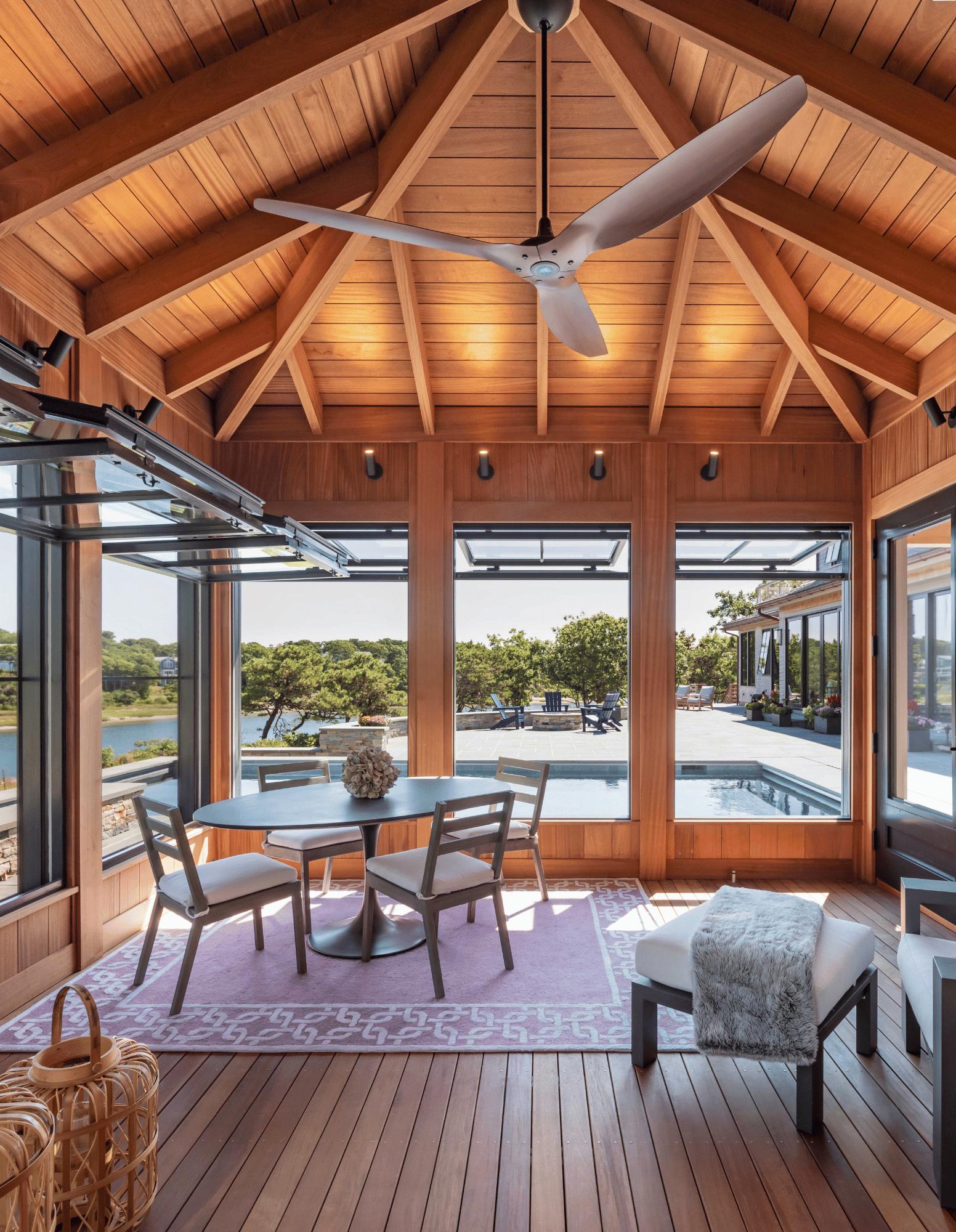
Harbor Point Cape Cod, MA
RED-LIST CHEMICAL GUIDE
Bisphenol A (BPA)
Used primarily in the production of polycarbonate plastics and epoxy resins. Health effects include endocrine disruption, heart disease, thyroid disruption, cancer, and many other negative long-term impacts.
Found in: Epoxy resins, polycarbonate plastics, grout, adhesives, some paints & powder coats
Formaldehyde
Strong-smelling, flammable gas that is often mixed into chemical compounds to be used in a wide spectrum of products. It is known to cause burning sensations in the eyes & throat, nausea, difficulty breathing, and can even trigger asthma attacks.
Found in: Plywood, pressed-wood, adhesives, paper product coatings, some fiberglass & mineral wool batt insulations
Halogenated Flame Retardants (HFR)
Chemicals added to products to delay or prevent ignition and spread of fire. Halogens are chemicals such as Bromine, Chlorine, Fluorine, and Iodine, commonly included in flame retardants. HFR’s are a human health concern and are associated with reduced fertility, birth defects, reduced IQ, and hormonal changes. Treated products cannot be recycled at the end of their life, thus resulting in landfill waste or incineration which releases toxins into the air, water, and soil, impacting food and water supplies.
Found in: Furniture foam, textiles, insulation
Hexavalent Chromium
Toxic form of chromium known as CR6 & Hex6 in the environment that occurs naturally, but is primarily produced by industrial processes. Hex6 is a human carcinogen which leads to a wide variety of health impacts ranging from lung cancer to liver damage.
Found in: Chrome plating, anti-corrosion coatings, some stainless steel
Pthalates
Known as plasticizers, used to make plastics more flexible or resilient. They can be easily released into the environment because they are not chemically bound to products which can cause evaporaton during use, resulting in human exposure. They are a carcinogen and exposure can lead to hormone disruption, asthma, allergies, and reproductive problems. Found in: Vinyl Products including wallcoverings, carpet backings, paints & coatings, adhesives, caulks, glues
Poly Vinyl Chloride (PVC)
The World’s third-most produced synthetic plastic polymer. Production and burning of PVC results in release of toxins including dioxins which can cause a wide range of health effects including cancer, birth defects, diabetes, endometriosis, etc. with potent carcinogens that the human body absorbs through inhalation. PVC is linked to respiratory ailments, increases the risk of cancer, and contributes to the degradation of indoor air quality.
Found in: Vinyl products including wallcoverings, carpet backings, PVC pipes, and upholstery
RED-LIST ALTERNATIVES
Bisphenol A (BPA)
; Look for BPA-Free Labels.
; Avoid harmful BPA-Free alternatives like BPS.
; Use PET Plastics instead.
; Avoid epoxy resins and search for green alternatives.
Formaldehyde
; Request “no added formaldehyde” when specifying composite woods such as plywood and MDF.
; Consider composite wood products that use soybean protein binders or resins.
Halogenated Flame Retardants (HFR)
; Avoid selecting textiles containing HFR’s.
; Carnegie has a great selection of textiles that are finish-free.
; Look for fabrics that are inherently flame resistant.
; If flame retardants are required, look for Compro FR-60, a safe, non-toxic, non-halogen flame retardent.
Hexavalent Chromium
; Use anodized aluminum as an alternative to chrome plating when possible.
; Ask manufacturers of steel stud framing and ductwork to eliminate the “passivation coating” which contains hexavalent chromium (Cr6). Request RoHS (Restriction of Hazardous Substances) compliance.
; Trivalent Chromium (Cr3) plating is a safer alternative and is not as strictly regulated which reduces overhead costs. Information about the full environmental and human health effects has not yet been heavily researched, so caution should be taken.
; See the Miller-Hull Red List for additional alternatives to Hexavalent Chromium.
Pthalates
; Use alternatives to Vinyl flooring such as rubber, bio-based LVT, linoleum or LPT (Luxury polyolefin tile) flooring.
; Look for paints and lacquers that are marked as pthalate-free.
; Select carpet backings made from recycled PET plastics or glass, or select a foam cushion-back.
Poly Vinyl Chloride (PVC)
; Specify upholstery that is PVC-Free, use alternatives such as Polyurethane or Silicone.
; Use alternatives to Vinyl flooring such as rubber, bio-based LVT, linoleum, cork, or polyolefin flooring.
; Select carpet backings that are PVC-Free, made of bio-based materials or recycled PET Plastics.
; When specifying windows, avoid Vinyl frames, use fiberglass, aluminum or wood instead.
; Avoid window treatments containing PVC, instead select shades made of Olefin or Polyester.
GREEN LABEL CHEAT SHEET
Standards
a set of guidelines to build to
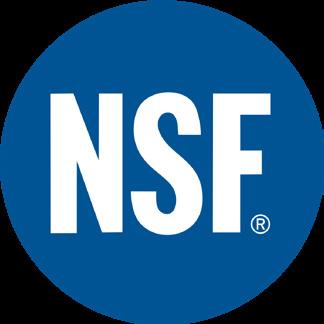
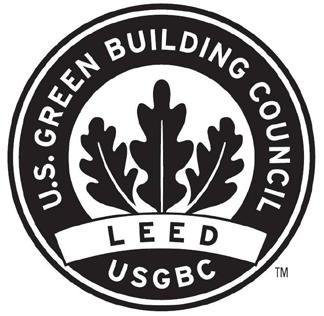
Certifications

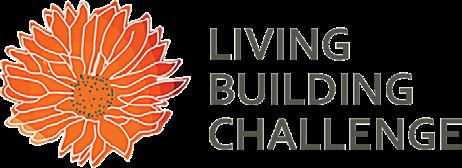
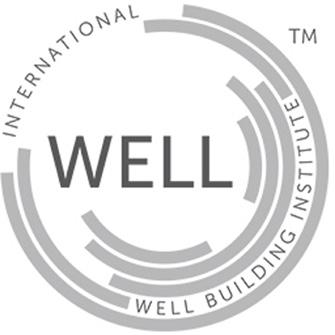
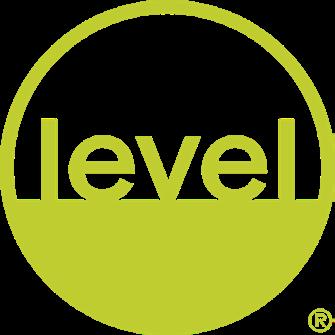
a third-party label awarded upon meeting certain standards
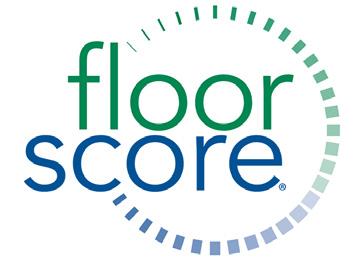

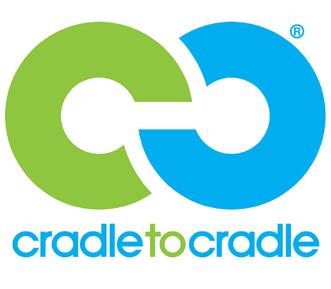

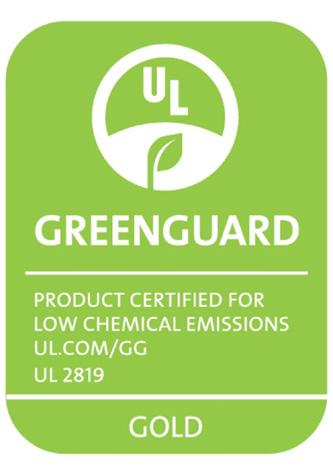
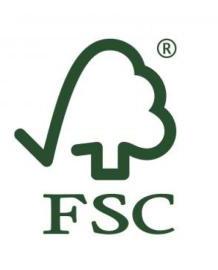

Declarations
documents that provide transparency
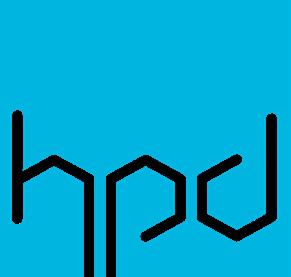

Material Selections


report material content and/or responsible sourcing
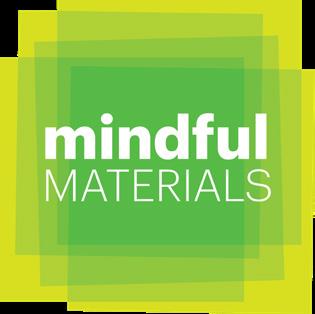
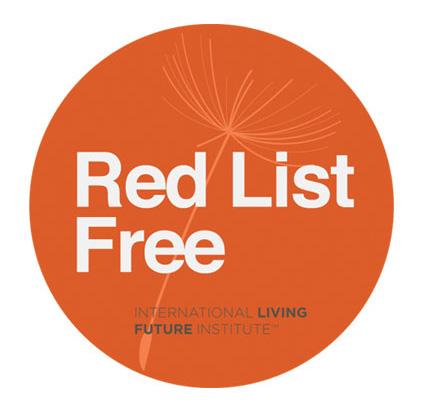

GREEN LABELS
which ones to look for and what they mean
Low Emitting Materials
Certifications approved for LEED v4, passing CDPH (California Department of Public Health) testing for VOC emissions.
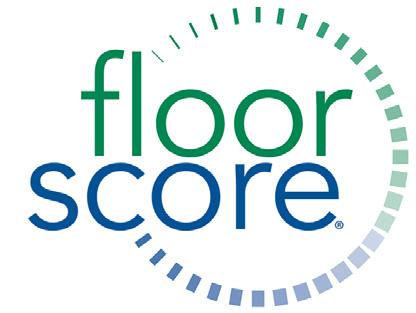
The most recognized indoor air quality (IAQ) certification standard for hard surface flooring materials, adhesives, and underlayments.

A transparent certification for furniture and building materials aligning with ANSI/BIFMA, recognized by LEED, WELL, and LBC. Requires annual review by independent labs to maintain certification.
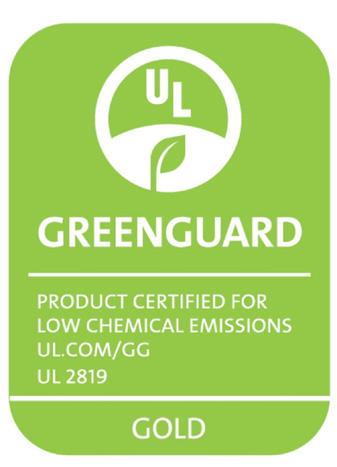
Measures safe levels of longterm occupational exposure to emissions of red-list chemicals and chemicals of concern according to CDPH standards. Applies to furniture, flooring, and building materials


LEVEL is a certification created by BIFMA for furniture that indicates responsible sourcing, manfacturing and company responsibility. There are three performance tiers, each of which meet a higher standard of environmental, health & wellness, and social impact.
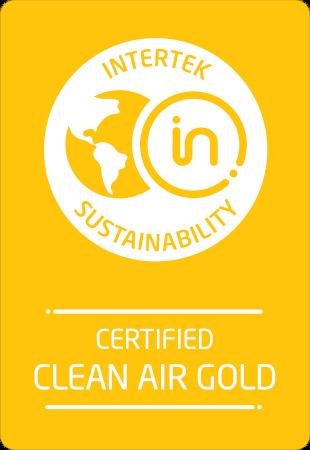
Certifies that carpet, adhesive, and cushion products are the lowest emitting ones on the market. Sets high standards for indoor air quality and is a toptier program for certification approved by the EPA.
Intertek Clean Air Gold conforms to ANSI/BIFMA e3 standards. It also qualifies for LEED and WELL for lowemitting materials. Intertek tests a range of products including furniture, appliances, textiles, and much more.
GLOSSARY OF TERMS
B Corp Certification - A designation that a business is meeting high standards of verified performance, accountability, and transparency on factors from employee benefits and charitable giving to supply chain practices and input materials.
BIFMA Level - A voluntary standard for business and institutional furniture manufacturers. The standard establishes measurable criteria for multiple levels of achievement and performance for manufacturers at different stages of their sustainability journey. Manufacturers that achieve level certification demonstrate to the marketplace that their products, manufacturing facilities and company policies have met stringent third-party sustainability requirements.
Cradle to Cradle (C2C) - A system of scoring brands for their commitment to the circular economy – the reduction of waste and hazardous chemicals, more efficient uses of resources and the reuse of materials, energy efficiency and social responsibility. Requires companies to continuously improve their products.
Declare - An ingredients initiative for building products that is designed to shape a greener, healthier environment for construction workers, business employees, and customers alike. The Declare program labels goods with a full list of ingredients, and expands the transparency of the building market
Environmental Product Declaration (EPD)An independently verified and registered document that communicates transparent and comparable information about the life-cycle environmental impact of products
Facts - Developed to recognize contract textiles that conform to the rigors of the multi-attribute standard NSF/ANSI 336 and are third-party certified. A Facts sustainability rating indicates a textile has been evaluated for environmental, economic and social aspects across its life cycle.
FloorScore® - The most recognized indoor air quality (IAQ) certification standard for hard surface flooring materials, adhesives, and underlayments. Developed by SCS with the Resilient Floor Covering Institute (RFCI), a leading industry trade association of flooring manufacturers and suppliers, it qualifies for many green building schemes including LEED v4, WELL, BREEAM, and CHPS.
Greenguard - Certifies through lab testing that a product meets emission thresholds for formaldehyde, total aldehydes, total VOC’s, and 1/10th of the threshold limit value - a regulatory standard measuring safe levels of long-term occupational exposure. It also assesses emissions of other chemicals of concern. Greenguard gold meets California’s most stringent restrictions.
Healthier Hospitals Initiative (HHI) - A coalition of major health systems and organizations committed to improving sustainability and safety across the healthcare sector, has created the Healthier Hospitals Agenda to chart a path to a healthier, more sustainable and more cost effective healthcare system.
Health Product Declaration (HPD)Provides a standardized way of reporting the material contents of building products, and the health effects associated with these materials
JUST Label - A nutrition label for socially just and equitable organizations. As a voluntary disclosure tool for organizations rather than a certification program, it is a transparency platform for organizations to disclose their operations, including how they treat their employees and where they make financial and community investments.
LBC Red List Free - Products disclose 100% of product ingredients plus residuals present at or above 100 ppm (0.01%) in the final product and do not contain any Red List chemicals. They have been shown to meet the requirements of the Living Building Challenge Red List Imperative.
NSC 373 - Establishes a set of welldefined environmental, ecological, social responsibility and human health requirements for stone quarries and processors to measure the extent to which stone is produced sustainably.
NSF/ANSI 140 - Sustainability for carpet that is the foremost standard by which to evaluate and certify sustainability of commerical carpet products across their entire product life cycle.
SCS Indoor Advantage - Certifies that products meet low VOC emissions with the most transparent indoor air quality standard for furniture and buiding materials. A third party certification by SCS Global Services, recognized by the EPA and GSA.
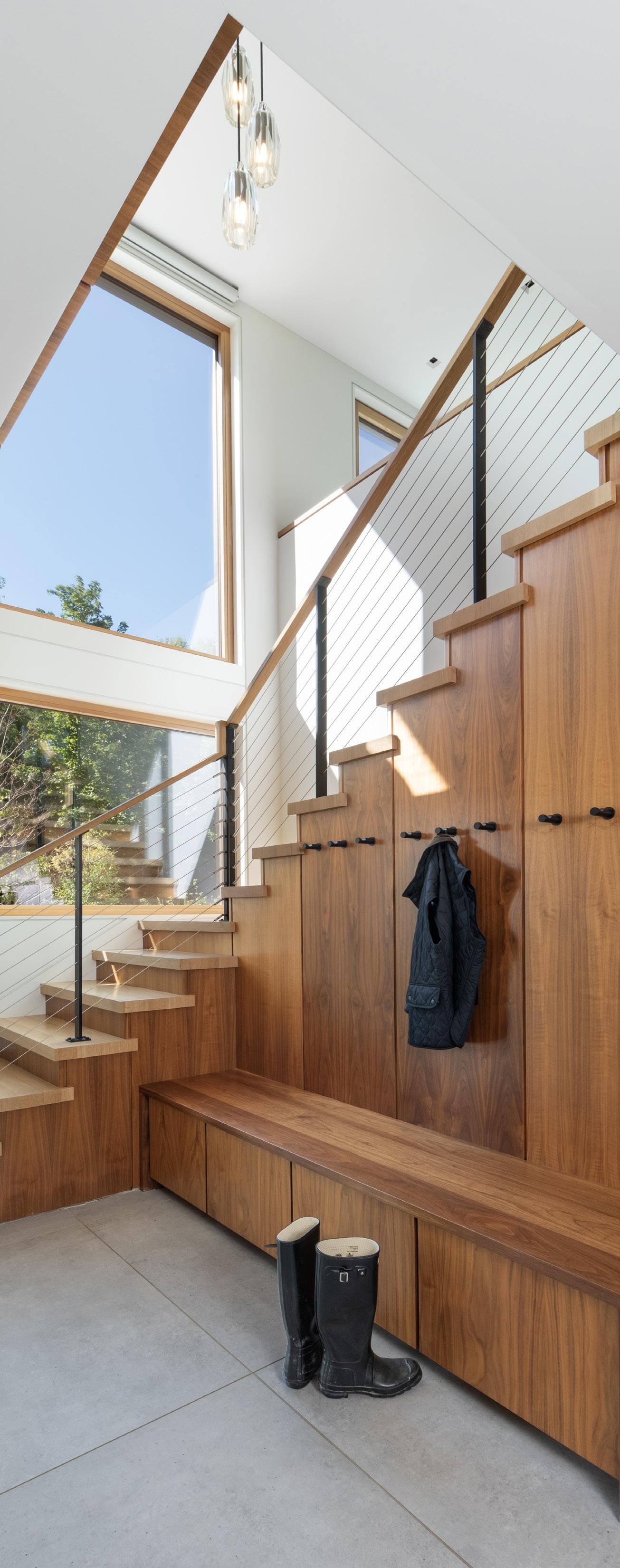
Harbor Point Cape Cod, MA
